
The List of Surgical Instruments For Plastic Surgery
Plastic Surgery according to the medical dictionary, is the branch of medicine that is dedicated to conditions that are amenable to or demand operative procedures. The surgical procedures are conducted by certified surgeons using a variety of Surgical Instruments. They are trained in using this equipment for surgery and with the help of these tools manipulate the organs and tissues of the human body. There are some Surgical Tools that are widely used for almost all surgical procedures like suturing needles and scalpels, others are restricted only for specialized procedures and may be used only for a certain branch of surgery like Neurosurgery and Orthopaedics.
Today there is a wide variety of tools and equipment available that make surgery quite easy and simple for the surgeons. So, to make you aware of the specialized Surgical Equipment below is a list of some popular Surgical Instruments Names that are widely used today in the branch of Plastic Surgery also.

Surgical Scissors
Surgical Scissors also known as medical scissors are widely used instruments in the surgery branch and are used to cut tissues during operative procedures it is available in a variety of shapes and sizes. These surgical or medical scissors are classified as blunt, sharp, straight, and, curved. Mayo Scissors are used mainly for cutting the sutures or any other heavy tissues of the body, while some small variants are used to cut only the delicate materials. All blunt-tip surgical or medical scissors are only used to cut the dressings and the sutures. These operative scissors are mainly designed using the pure form of Surgical Grade Stainless Steel and it is available in varying lengths and sizes to suit the operative needs. Tungsten Carbide Blades Scissors - On the surface of the blades you can see the metal welded called tungsten carbide or *T/C*. These metal strips are much rougher than stainless steel but after refinishing and grinding it becomes more valuable than steel. When grind and sharp, these tungsten carbide surfaces stay sharper for a longer time and also function correctly, after sharpening the blade of medical scissors you can't see the difference. Normally all medical scissors are made with stainless steel but in some cases, there are special requirements for medical scissors with tungsten carbide inserts.
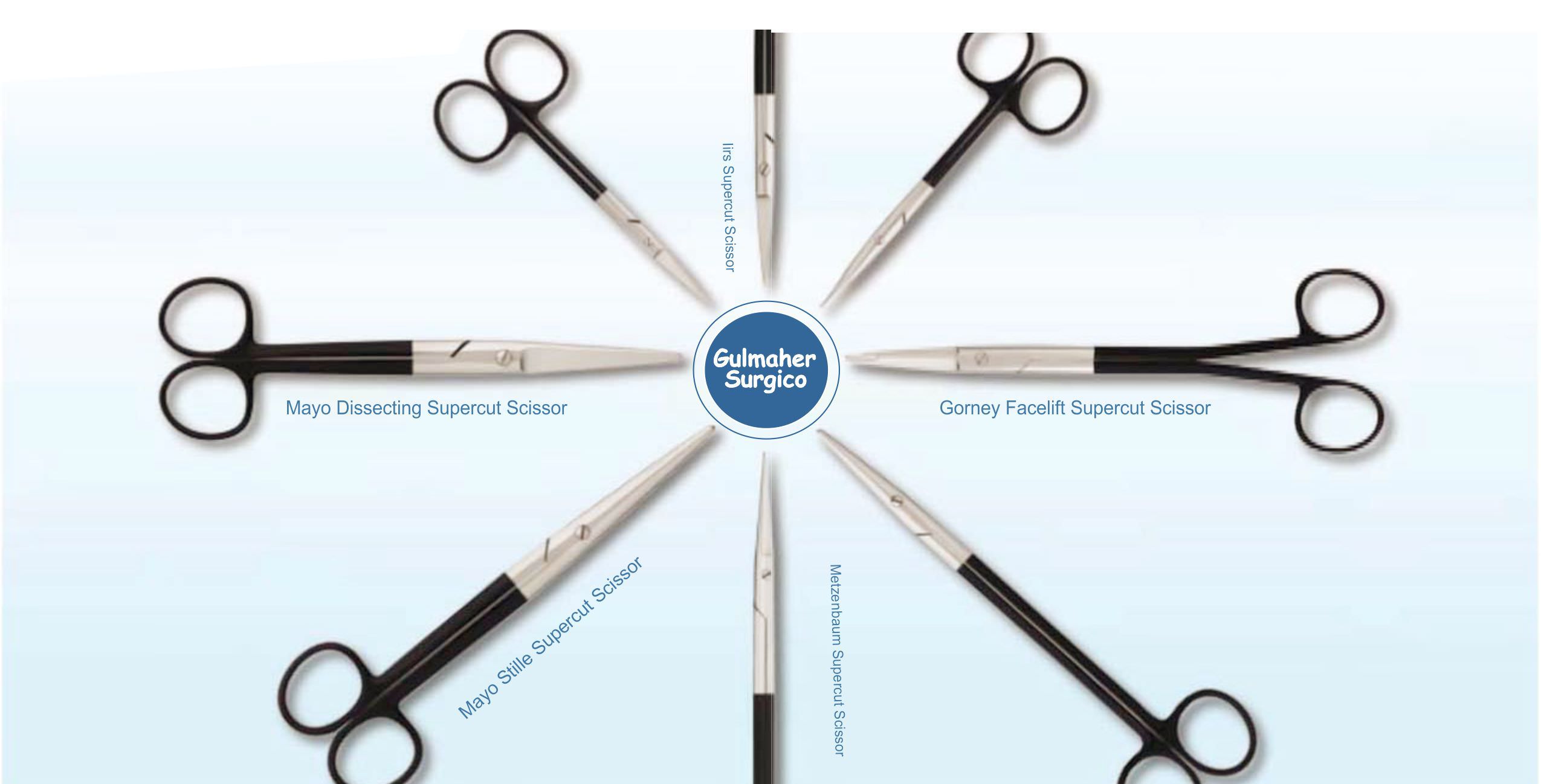
Scalpels are termed as Surgical Knife which is a fine edge cutting tool that comes with a sharp blade on the edges that enables the surgeons to make incisions without exerting much effort. It helps surgeons to have maximum control over the knife while making an incision and cutting the tissues. It enables us to make an incision on the body and other issues. This operative knife is available in both the stainless steel and disposable variant and it comes in a variety of shapes and sizes depending upon the needs of the surgical procedures. Surgeons use the knife to make an initial incision in the skin to open the body to conduct the surgery. Again Surgical Grade Stainless Steel is used to design this operative knife and it ensures correct surgical incision for performing surgery. Keeping the need for a surgical procedure the knife is designed and it can be used both in minor and major surgical procedures.

Surgical Acland microvascular clamps are the medical devices that are used while performing surgery and they help the surgeons to hold the tissues or vessels together to prevent blood loss. This operative clip is usually made out of titanium and it is estimated for a major surgery around 40-60 clips are used to prevent blood loss and to hold the vessels together. The prime reason for using these clips during surgery is that they prevent blood loss which may occur during surgery and may get into the brain to cause further damage. It is also used in vasectomy so as to pinch the sides together of the vas deferens, therefore, enabling the surgeons to conduct their surgery successfully.
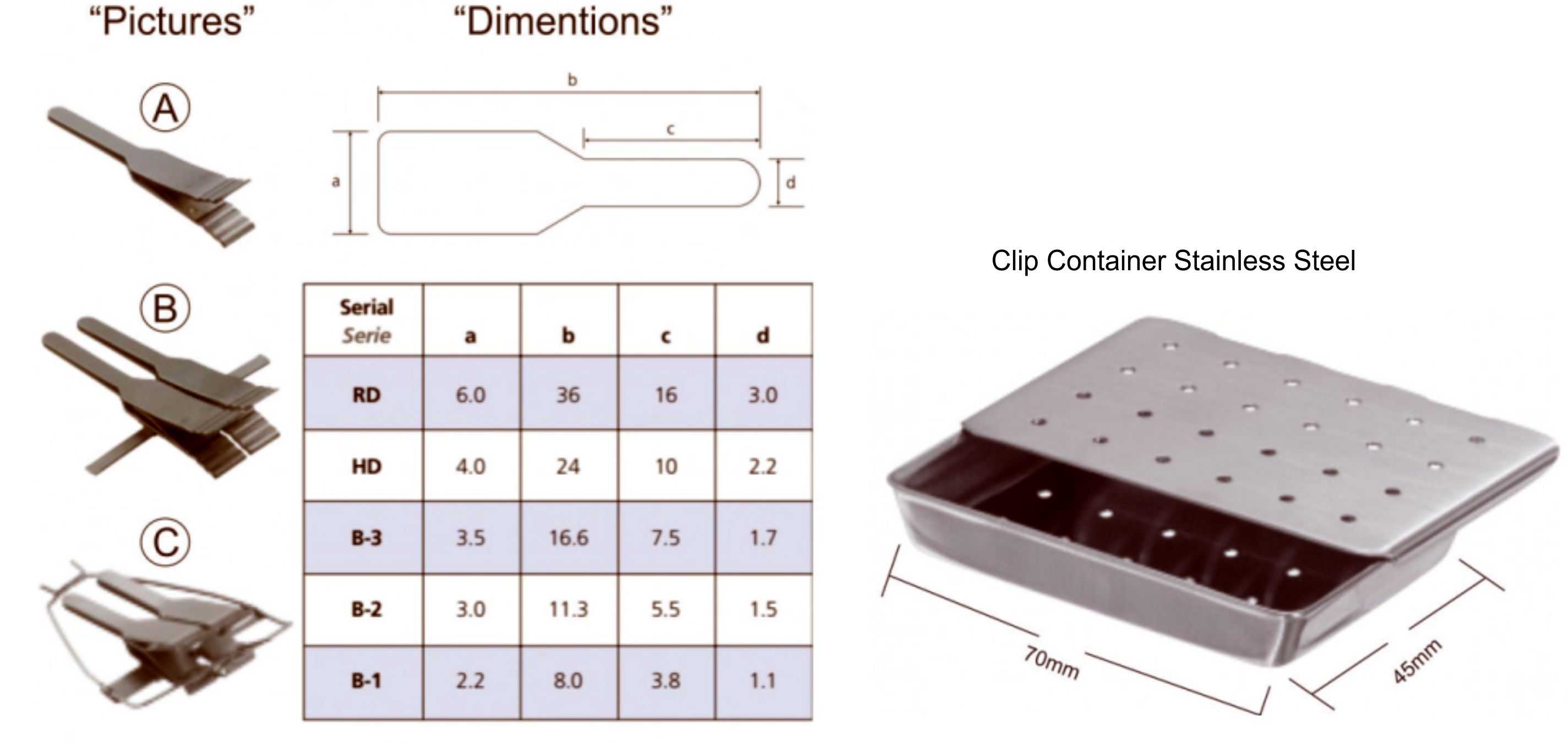
Surgical Clamps:
Surgical Clamps are the widely used surgical instruments that enable surgeons to secure the surgical swabs together or hold the tissues while performing the surgery. There is a wide selection of such clamps and each comes with different functions. But the prime focus of these Surgical Instruments remains the same and that is for fastening and clamping the tissues while performing the surgical procedure. They are mostly used in the operating theatre by surgeons to grab and hold the arteries and tissues for hemostasis or for securing the medical swabs safely. Depending upon the area of application, pincer style, and form, a variety of clamps are being used which include pean clamps, Halstead Artery Clamps, Backhaus swab clamps, Kocher clamps, universal, and Jones clamps.
But one to note that the Surgical Clamps are usually toothed and hence it provides a more secure hold, but the only drawback associated with it is that it can injure or traumatize the tissue. So, this Surgical Equipment needs to be used carefully to prevent the damages that may occur with its toothed clamping.
Surgical Forceps:
Surgical Forceps are mainly used by surgeons during operative procedures as they allow them to manipulate or hold the tissues and also to clamp the blood vessels firmly. Forceps are basically hinged tools that are just similar to of scissors but have a tong-like or flat tip that enables the surgeons to hold, clamp, or even move the tissues while performing the surgical procedure.
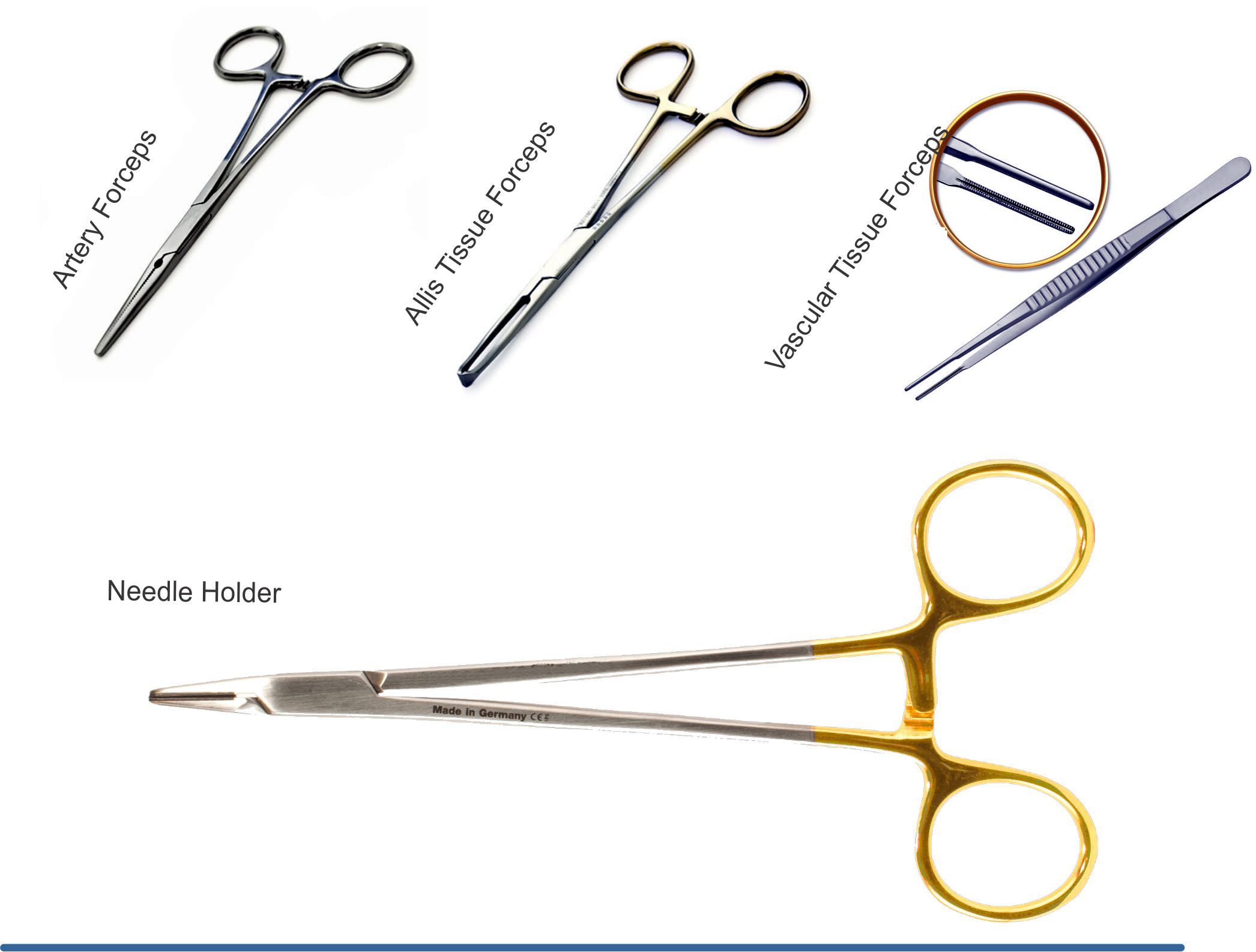
The Surgical Forceps are actually in three different variants – the tissue/dressing forceps, hemostats used to clamp the blood vessels, and intestinal forceps. Since it is classified as scissors, they are available in straight or curved variations and may or may out have small teeth at their tips. These Surgical Instruments are available in different sizes to satisfy the different needs of the surgical procedure. Some forces are used for gynecological surgery to hold the head of the baby. They are large and it is used mainly to hold the head of the baby to securely remove the baby from the birth canal during the cesarean.
Surgical Tray:
A Surgical Tray is an instrument that is seen in the operative rooms in hospitals. It is primarily used to store all the Surgical Tools that are expected to be needed to successfully complete a scheduled surgical procedure. All the instruments are sterilized before a surgical procedure and after the autoclaving or sterilizing procedure it is taken out from the machine and placed on these trays and then it is sealed and taken to the operative room for performing the surgery.
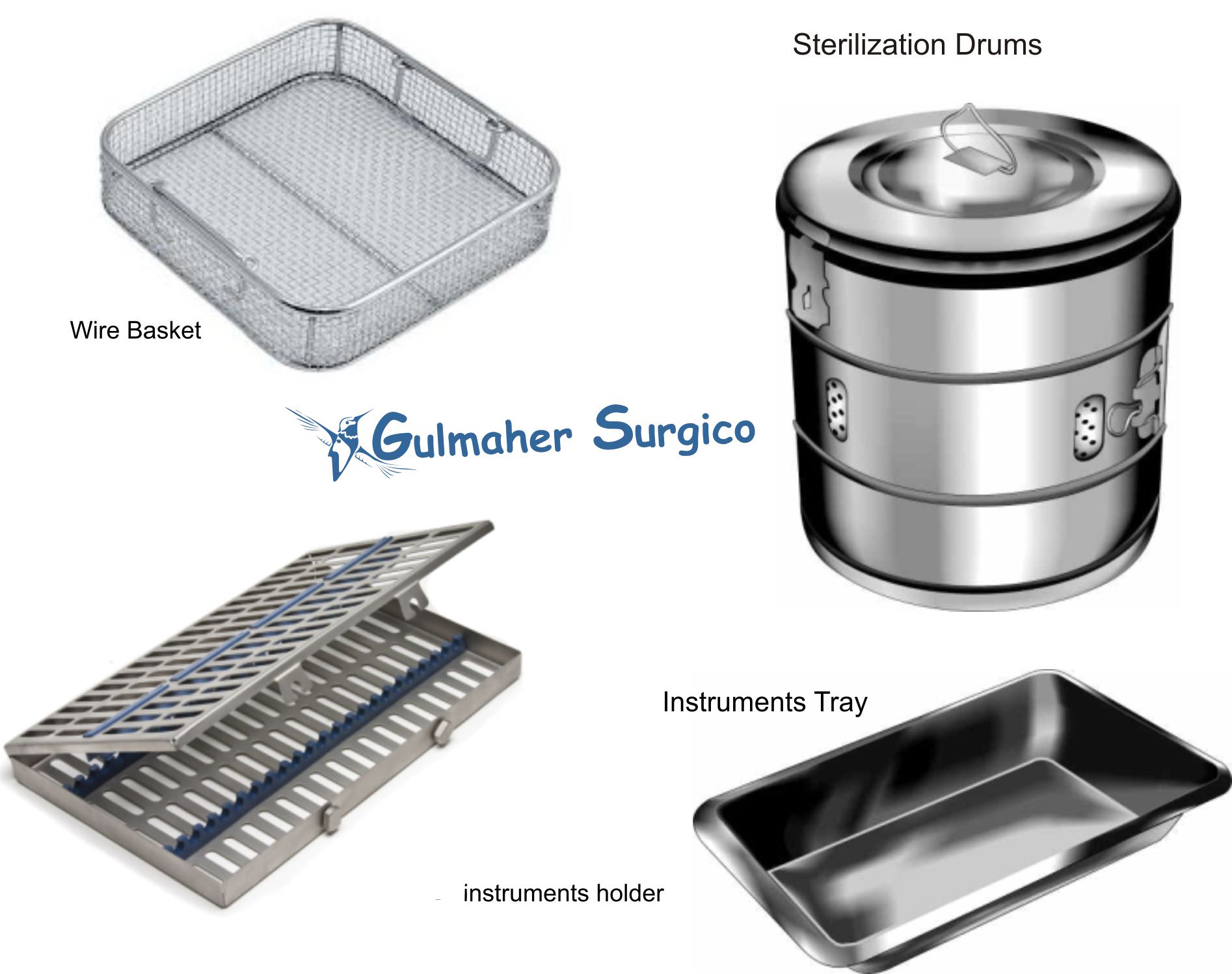
The common tray is designed with Surgical Grade Stainless Steel and this allows the tray to be sterilized in hot water prior to its use. The tray is polished to a higher luster and it has sufficient space to accommodate all the surgical types of equipment safely and securely. The surgical rooms usually comprise several such trays set up for backup if the equipment is needed while performing the surgery. There are also disposable trays available which are only used for one procedure and after its use, it is disposed of. These types of trays are mainly used for remote surgical settings where the weight of the steel tray can be a hindrance. These trays are designed in such a way that it enables the tools to be laid out and displayed so that the surgeon won’t find any difficulty in recognizing the tools.
Surgical Saw:
Surgical Saw is a medical instrument that is mainly used for surgical procedures and it is mainly used as a bone cutter that is used in orthopedic procedures. It is powerful lightweight and efficient to perform the surgical procedure this saw is powered by a powerful motor and its design provides high peak torque to allow the surgeon to see through the complicated bones and muscles of your body to perform the surgery successfully. Some of the models come with a brushless DC motor that is sterilized to over thousands of autoclave cycles and hence it is safe for use during surgical procedures. These models come with battery power which has a maximum life span of 10 years. The battery can be recharged after every use so that the next surgery can be performed without hindrance. The blades are designed with Surgical Grade Stainless Steel.
Surgical Needle:
The Surgical Needle is the medical instrument that is used to tie the tissues together for healing after the surgery is completed. Different types of needles are being used for surgical procedures. It is strong enough to pass through the tough tissues of your body, while causing little to no trauma to your delicate and soft tissues, thereby reducing the reactions in tissues. The medical needles are carefully designed using surgical-grade stainless Steel and they come in different sizes have sharp to blunt edges and can be either curved or straight.
Straight needles are used mainly for skin closure after surgery is performed and they can be used for suturing without the need of a needle holder, especially if the suturing area offers good visibility. The curved needles are the most commonly used Surgical Needle and it is designed in diverse configurations, which include half curved, ¼ circle, 3/8 circle, 1/2 curved, and 5/8 curved needles that are used for skin closure and respiratory surgeries. The cutting needles are designed with sharp points that are used to penetrate the tough skin and they come with three cutting edges – the reverse cutting, taper cut needles, and side cutting or spatulate needle.
What Are Surgical Knots?
Surgical Knots or ligatures are the knots that are used by surgeons to bind the suture materials together and firmly while binding the tissues together post-surgery. These knots are used in the veterinary and medical settings. The effectiveness of tying the Surgical Knot depends on the critical skills of the surgeon because if the knot is not secured firmly it will not stay intact and as a result, the patient may experience serious consequences, especially after the pulmonary resection. There are basically three different ways to tie the knot including:
- Two-Handed – This is a common way and every surgeon is well-versed with this method. This is the first step of tying the knot and once you master this method you can move forward to try out the single-handed tying of the knot. You need to ensure that you are well-versed in the basic principles of tying the square and stronger knots.
- Single-Handed – This is the second and most complicated way to tie the surgical knots.
- Instrument – Surgeons usually perform the instrument tie when they are performing the suturing. You need to know the basic principle of instrument tie or else you may end up closing the incisions improperly.
Surgical Endoscopes:
Surgical Endoscopes are instruments that are mainly designed to be introduced into the body to have a clear view of the internal organs and parts. The instrument goes through the small incision made in the body or through the natural openings to diagnose as well as to treat health conditions. This instrument mainly emphasizes the diagnosis and treatment with or without any cavity incision in the body. It can also be used for imaging of the internal body parts and minor surgery.
Open Heart Surgical Instruments:
Open Heart Surgical Instruments are the medical equipment that is mainly used for performing cardiovascular surgery. The list of equipment required for performing open heart surgery is long and it is not possible to cover all the types of equipment that are needed. Some of the crucial equipment required for the surgery include:
d and c instruments, celiotomy instruments, anal speculum, DeBakey forceps, d and c surgery instruments, dissection kit, mayo scissors, Wartenberg pinwheel, Gigli saw handle, Hohmann retractor, Balfour retractor, Toomey syringe, gynecologist tools, army navy retractor, freer elevator, Deaver retractor, rib spreader, satinsky clamp, tenotomy scissors, sigmoid notch, sickle knife, towel clamp, Jennings gag, Pederson speculum, Lefort osteotomies, tube gauze, tube gauze, c instruments, frog dissecting kit, Cottle elevator, Backhaus towel clamp, graves speculum, Babcock clamp, Wartenberg pinwheel, mcglamry elevator, areola sizes, pratt dilator, rhinoplasty instruments, ragnell retractor, Gigli wire handle, open mouth gags, Teflon block, van Buren sounds, microcannula liposuction, forehead implant, Frazier suction tube, prat dilator, meyerding retractor, pratt dilators, fianchetto retractors, fetal stethoscope, gyne instruments, holding syringe, what is d and c, gynecologist instrument, doyen forceps, Debakey instrument, Halsey plastic surgery, meyerding retractors .
- Scalpel Handle
- Scissors
- Forceps
- Clamps
- Clips
- Surgical Knife
- Patent Duct
Adson forceps
- Surgical Suture
- Dilator
- Curette
- Retractors
Needle Holders
- Probe
These are some of the Cardiovascular Instruments that you would be requiring for the open-heart surgery. The list of the instrument is too long and it would be provided by the medical facility prior to the surgery. There can be other instruments that are not mentioned in this list.
These were some of the Major Basic Surgical Instruments that are used today in the field of surgery. Other types of instruments are being used and for different surgical procedures, different instruments are used. It is not necessary that the instruments that are used for cardiovascular surgery would be used for other abdominal surgery. So, based on the surgical procedure the instruments would change.

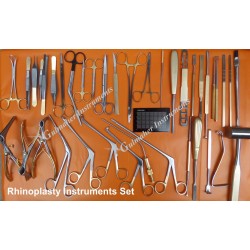
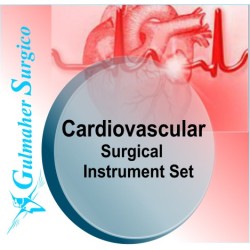
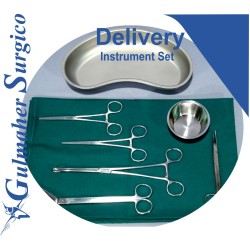
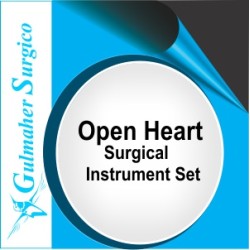
3 Comment(s)
Really informative about instruments.. Quality and Prices are also superb.
When it comes to bandage and plaster cast instruments, Volgo Care carries everything you need in a variety of sizes. We have designed products to suit budgets, styles, and needs as well as our skilled staff who can help you every step of the way.
Our bandage cast instruments are perfect for beginners to learn how to use plaster and bandages.
I just wanted to say how much I enjoyed reading your article on surgical instruments. As someone who has always been fascinated by the medical field, I found your piece to be incredibly informative and well-written. It's clear that you have a deep knowledge and passion for this subject, and it shines through in your writing.
I was particularly impressed by the comprehensive list of surgical instruments you provided. It's amazing to see just how many different tools are used in the operating room, each with its specific purpose. Your descriptions and explanations of each instrument were clear and easy to understand, making it accessible even to readers who may not have a medical background. I also appreciated the accompanying images that helped visualize the instruments you mentioned.
Moreover, I found your article to be valuable not only for medical professionals but also for curious individuals like myself who have an interest in learning more about surgical procedures. The way you highlighted the importance of each instrument and its role in ensuring successful surgeries was enlightening. It's evident that surgical instruments are not just tools but rather vital components that contribute to patient care and positive outcomes.
Thank you for taking the time to write such an engaging and educational article. It's refreshing to come across content that not only imparts knowledge but also sparks curiosity and appreciation for the intricacies of the medical field. I look forward to reading more of your work in the future! Keep up the great work, and best wishes on your writing endeavors.
Leave a Comment